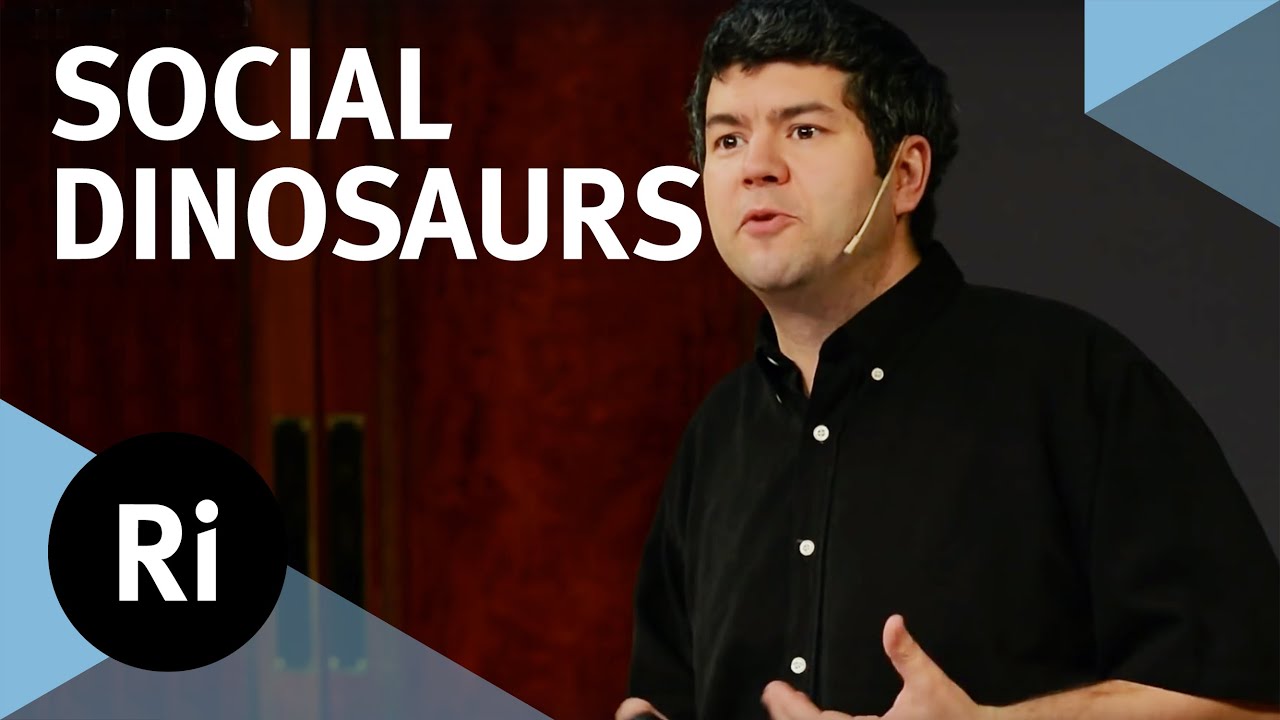The Royal Institution
How do you learn about the social behaviour of animals that have been extinct for millions of years? Palaeontologist David Hone discusses what the fossil record can – and can’t – tell us about how the dinosaurs lived.
Subscribe for regular science videos: http://bit.ly/RiSubscRibe
Piecing together the behaviour of long extinct groups is naturally very difficult, but can be done with care. New fossil from the Gobi deserts of Mongolia are helping us work out how these animals lived and died together.
David Hone is a palaeontologist and writer. His research focuses on the behaviour and ecology of the dinosaurs and their flying relatives, the pterosaurs. He writes about palaeontology and science outreach online through his own blog and on the Guardian.
http://www.davehone.co.uk/
The Ri is on Twitter: http://twitter.com/ri_science
and Facebook: http://www.facebook.com/royalinstitution
and Tumblr: http://ri-science.tumblr.com/
Our editorial policy: http://www.rigb.org/home/editorial-policy
Subscribe for the latest science videos: http://bit.ly/RiNewsletter
Source



Nice talk,but there are still a huge margin for us to understand the social behaviour of any species of dinosaurs.
All we can find in fossils are the physical appearance,diet and habitat of that creature that died for million of years.
Remember behaviour is a kind of of spiritual aspect that can't be seen by rocks.All we can do is to find evidence and compare their behaviour with our modern organism.
Great lecture
Really enjoyed this one!
Just came across this great channel. Seems much like the British Ted talks
I can't believe the opening slide didn't say something like "Dinosaur Party in Mongolia!!"
Lovely talk! I've read his book "The Tyranosaur Chronicles" and it was amazing! He is very good at what he does and is truly inspiring!
It makes me start to count the days until I can finally go to the Museu da Lourinhã (just 2 weeks to go), where I'm a volunteer and a fossil preparator.
31:00 – The nearest living relative of the lion is the leopard, not the tiger, but the point remains the same.
more dinosaur lectures, please!! ???
americans wouldn't say 10 to 15cm, no we would say a foot to a foot and a half. a meter is easier for us, because it is so close to a yard, and we know what a yard is, just not a kilometer. we know what a mile is though. we failed on the hubble space telescope, because the scientists measure in metric, while all perkin elmer's, (who was a major machinery manufacturer), equipment was all standard.
OMG this guy is so good!
This guy is good.
Enjoyed every minute and I could easily have watched for an other hour or two.
Excellent presentation
Ligs = ribs + limbs
enjoyed this talk by David Hone so much, thank you.
Couldn't play the video, but that glassesusa commercial sure played each time I tried. These un-skip-able commercials at the beginnings of videos mess up the play.
That's gotta be hard on the hips. What I mean is you always see predatory dinosaurs in poses where their entire front ends are stretched forward and away from their center of gravity. I can see no problem if they are frequently darting quickly, but their size makes it hard to envision them always quickly moving(espescially if they had to eat less as quoted by the speaker) and the thought of something like them constantly on the move like a shark is obviously absurd to me. I just wonder, do they sit? Or maybe use a perch like stance on something? Do they lay down? How would they get up? If they are social creatures, surely many would remain motionless at times, I imagine. There are so many questions along this line that I would genuinely like to ask someone like the speaker or anyone with thorough knowledge of these predators.
I like this.
Spinosaurs were definitely not social dinosaurs. Even during their juvenile years they led a solitary existence.
i was sceptic,now i am less
But it's very important to understand birds are only dinosaurs in the sense that they are dinosaurs in a single group. Just looking at the first major division of dinosaurs between the "reptile hip" dinosaurs and the "bird hip" dinosaurs, all birds belong in the reptile hip subfamily.
It makes no sense at all to tell your audience "birds are dinosaurs" when there are almost no other theropods that had full feather coverage in adults and birds are almost the only theropods without any scales.
It's a blanket statement like saying that humans are monkeys.
Excellent lecturer! Interesting lecture delivered in such a lively manner. Would like to see more of this guy and his knowledge of dinosaurs.
He mentioned how we have some sex-determining methods in dinosaurs. What are some examples of these? I know of the work with medullary bone done on T. rex, but are there other methods known?
Great talk!
That part of inner Mongolia and China you'll find more dog bones than anything else.
Dead dogs everywhere,…not kidding.
If you don't see dog carcasses hanging in restaurants and outside of them, you'll find dead and dying dogs and pups on every sidewalk, street and ally way in every city, town and village in those areas, it's that omnipresent.
You even have to watch out walking the street's, because people throw live pups down to the streets from balconies regularly, don't ask me why, i have no idea why.
Disgusting people.
23:00
I was particularly pleased to learn that the British dinosaur ate fish and chips.